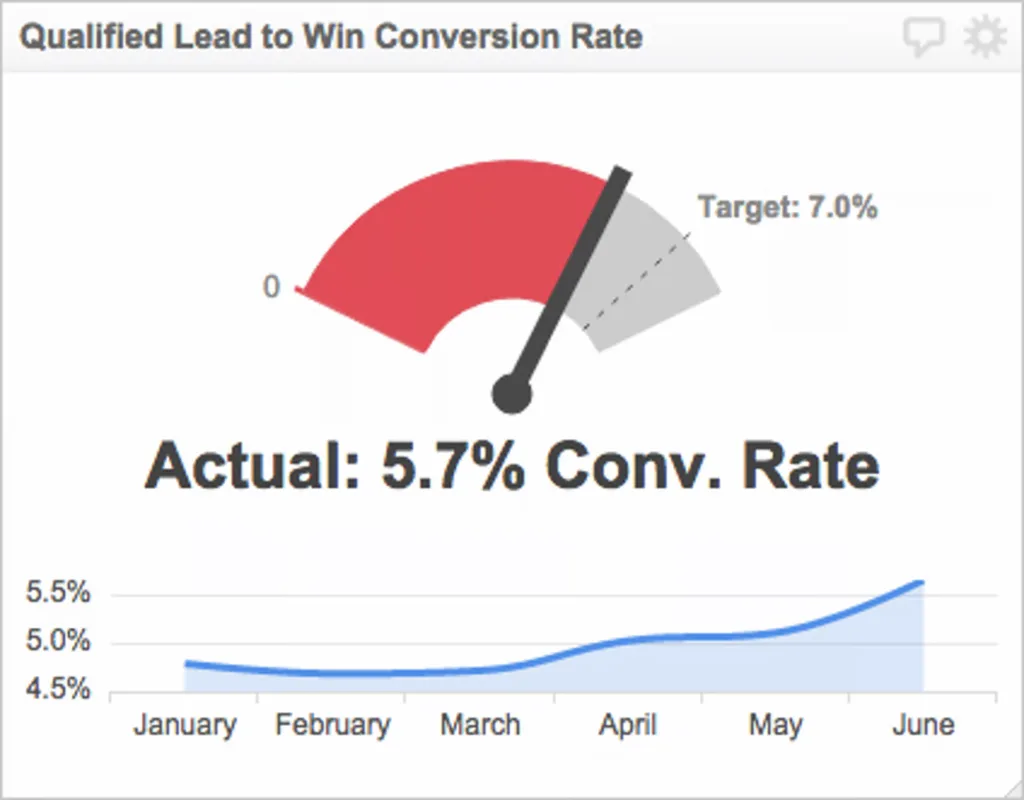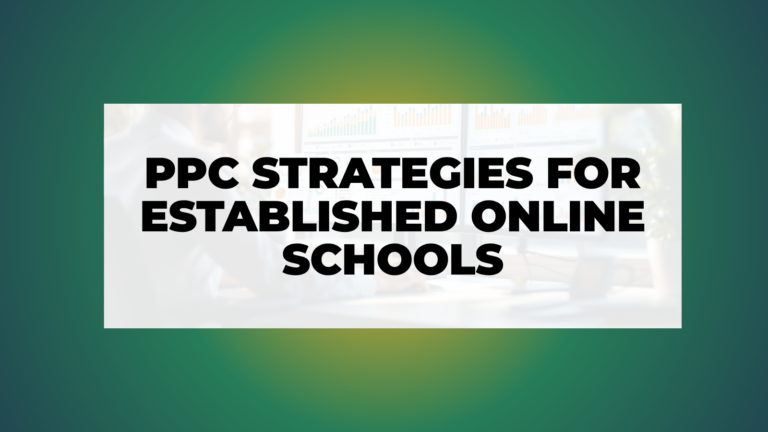Why Your Online School Needs Conversion Tracking (Even If It Sounds Technical)
You’re running ads, writing emails, posting content—doing all the right things to grow your online school.
But if you’re honest, you’re not always sure what’s working.
Some months bring in great results. Others, not so much. And figuring out why? That part feels like guesswork.
This isn’t a marketing problem. It’s a visibility problem.
The root issue is simple: you’re not seeing the full picture.
Without the right data in front of you, it’s nearly impossible to know which part of your marketing is actually driving enrollments. And when you don’t know what’s working, you can’t double down—or fix what’s broken.
That’s where conversion tracking comes in.
And no—it’s not just for tech teams or analytics experts.
At its core, conversion tracking is about measuring what matters. It tells you:
- Which campaigns/ad sources/marketing efforts bring in qualified leads and enrollments
- What actions people take before they enroll
- Where potential students drop off (and how to fix it)
If you’re an online school or eLearning provider, knowing this is non-negotiable.
You likely run multiple channels—Google, Meta, email, affiliate traffic. You may have lead magnets, sales calls, trials, and different types of offers. The funnel is long. If you’re not tracking it properly, you’re flying blind.
Yes, conversion tracking can sound technical.
But you don’t need to become a data analyst to understand the basics and make better decisions. That’s exactly what this guide is for.
We won’t go deep into the weeds. Instead, we’ll walk you through the three key concepts behind proper tracking:
- Storing your data
- Tracking the actions that matter
- Reporting it in a way that drives growth
This is also the first pillar in our proven 3 pillar growth framework for online schools. And it’s often the most overlooked.
If you care about growing your student base, optimizing ad spend, or hitting your revenue goals for your online school—this is where it all starts.
Let’s dive in.
1. Store: Capture What’s Already Happening
Capture What’s Already Happening
Every time someone visits your website, fills out a form, or clicks “Enroll Now,” a little trail of data is left behind.
Most of this is already being collected—whether you realize it or not.
- Your website stores user actions through hosting logs or your content platform.
- Your ad platforms (like Google, Meta, or Microsoft Ads) collect conversion data when users interact with your ads—if their tracking tags are installed.
- Your analytics tools, like Google Analytics 4 (GA4), store information about user behavior.
- Your CRM or email platform probably tracks leads, opens, and purchases too.
In other words: you’re already storing data. But that doesn’t mean you’re doing it in a way that helps you grow.
Here’s the challenge: all these tools are collecting information—but usually in silos. One system doesn’t talk to the other. So even though you have the data, it’s hard to act on it.
That’s why the first step is to be intentional about where and how this information is stored.
To solve this, you have two broad options:
Option 1: Use Google Tag Manager to Bring It All Under One Roof
When it comes to storing your data, one of the first questions to ask is:
Are your platforms actually set up to store the information you care about?
You might be using tools like Google Ads, Meta Ads, or a CRM platform—but are they saving the data you need to make smart decisions? Are they properly set up to record enrollments, form submissions, or other meaningful actions?
This is where Google Tag Manager (GTM) comes in.
GTM is a free tool that helps you centralize all the tracking systems your online school uses. It gives you one place to manage what data is being collected—and whether each system is doing its job.
Think of it as a control center for your data storage.
Instead of manually checking if each individual tool is storing the right actions (and jumping between accounts), you can use GTM to:
- Check what’s being tracked
- Update or fix anything that’s missing
- Ensure each system—from Google Analytics to ad platforms—is capturing the right data
Once GTM is installed on your website, it becomes the one place where your marketing setup can live. Whether you’re working with a developer, an agency, or managing it yourself, GTM provides a structured way to make sure your data collection is complete, consistent, and easy to manage.
You don’t need to learn how to use it yourself—but if you want your conversion tracking to work, you want to make sure it’s there.
Option 2: Get the Full Picture with a Data Warehouse
Even if you already have some tracking tools in place—maybe Google Tag Manager, GA4, and a few ad platforms—you might still be left wondering:
- Which platform is really driving the best return?
- What’s my actual cost to acquire a student, across all channels?
- What campaigns are contributing the most to revenue?
- And how do I see it all in one place?
These are smart, strategic questions. And if you’ve ever had to jump between five dashboards and a spreadsheet just to answer them, you’re not alone.
That’s where a data warehouse comes in.
A data warehouse helps you centralize all of your properly stored data from across your tools—ad platforms, analytics, CRM—so you can finally see the big picture. We often recommend Google BigQuery as a great starting point for eLearning providers.
If Google Tag Manager helps you make sure your data is stored correctly, BigQuery helps you interpret that data in a way that drives business decisions.
We’ve written more about how this works in our guide to Google BigQuery — and if you’re serious about optimizing what already works in your school, it’s worth a look.
You don’t need to implement this yourself. But knowing that this option exists gives you a clearer path forward when you’re ready to take your data to the next level.
Storing your data isn’t about collecting more—it’s about organizing what you already have so it can actually guide your decisions.
Once the right systems are in place, you’re ready for the next step: tracking the actions that matter.
2. Track: Measure What Matters
Once your systems are set up to store data, the next step is to decide what you want to track—and make sure those actions are actually being recorded.
This is what people mean when they talk about “conversion tracking.”
In plain terms, tracking means telling your tools:
“Hey, this is important. Pay attention when this happens.”
For an online school, those “important” actions might include:
- A visitor filling out a lead form
- Someone signing up for a free trial
- A phone call or calendar booking
- A course purchase or enrollment
- A key event in your funnel (like watching a lesson or completing a quiz)
These are called conversion events—and if you’re not tracking them properly, your systems can’t learn from them, optimize for them, or even report to you on them.
You might be running ads right now that are optimized for clicks or traffic—when what you actually care about is enrollments.
Without tracking those conversions clearly, your ad platforms won’t know what success looks like. And that means they can’t help you find more of the right people.
So how do you start tracking the right events?
The simplest approach is to:
- Define your most important actions (leads, trials, enrollments)
- Make sure those actions are tracked inside your core platforms: Google Analytics 4 (GA4), Google Ads, Meta Ads, and Microsoft Ads
Each platform has its own method for doing this, but if your website uses Google Tag Manager, you already have a way to manage all of these from one place.
📌 Resource: GA4 Foundation Checklist – Technical Setup
📌 Bonus Resource for advanced users: Conversion Measurement Guide for building a strong measurement strategy
This first guide walks you through setting up GA4 properly and ensuring that your key conversion events are tracked accurately.
And this video below will walk you through Google Ads conversion tracking.
Why this matters for your business
Tracking isn’t just a tech task. It’s what connects your marketing activity to real business results.
When you’re tracking the right things:
- Your ad platforms can optimize for actual results, not just traffic
- You can compare channels based on cost per enrollment, not just leads
- You can finally say with confidence, “This campaign is working,” or “This one needs fixing”
And just like storing, tracking doesn’t need to be perfect from day one. The key is to focus on a few high-impact events, make sure they’re recorded accurately, and build from there.
Next, we’ll look at the final step: reporting—how to actually see and interpret your data in a way that drives smart, confident decisions.
3. Report: Turn Data Into Direction
You’ve set up your systems to store the right data.
You’re tracking the most important actions for your online school.
Now comes the part that most people skip—making that data visible and useful.
Because the truth is, data sitting in the background doesn’t change anything.
You need to see it, understand it, and use it to guide your decisions.
That’s where reporting comes in.
Reporting is the process of turning all the raw data you’ve captured—every click, every trial, every purchase—into insights you can act on.
What does this look like in practice?
For an online school or eLearning business, good reporting helps you:
- See how close (or far) you are from your enrollment and revenue goals
- Monitor your cost per acquisition (CPA) across platforms
- Understand your return on ad spend (ROAS), both per channel and blended
- Compare weekly, monthly, and yearly performance
- Spot when things are improving—or slipping and act based on insights
Without reporting, you’re just collecting data for the sake of it.
With reporting, you get a clear view of what’s working and what needs attention—in real time.

Make your data easy to understand
One of the biggest reasons eLearning businesses don’t act on their data is because it’s hard to interpret. Logging into five different platforms, seeing five different versions of the truth, and trying to piece it all together in a spreadsheet? That’s exhausting—and it leads to inaction.
That’s why we recommend creating one clean dashboard where all your key metrics live.
This can be done using tools like Looker Studio (formerly Google Data Studio) or custom reporting solutions that connect to your data warehouse.
If you’ve taken the time to store your data properly and track the right events, this final step unlocks it all.
It’s the difference between just having data—and using it to grow.
Think of it like a GPS for your business
With proper reporting in place, you know:
- Where you are now
- Where you’re trying to go
- What route is getting you there fastest
Growth becomes less about trial and error, and more about following a proven path—because your data is showing you what’s working.
📌 Case Study: How Conversion Tracking Drove 3x Sales, Record Profits, and CA Market Domination for Online School
With clear tracking and reporting in place, this school was able to focus their ad budget where it worked best—and see exactly how every dollar returned value.
Conversion tracking isn’t about tags, spreadsheets, or dashboards.
It’s about creating clarity, so your decisions are based on facts, not hunches.
When you store your data intentionally, track what matters, and report it clearly—you unlock one of the most powerful levers for growth in your online school.
And that’s just the beginning.
Final Thoughts: Clarity First, Growth Second
If you’ve made it this far, here’s the big idea:
You don’t need more tools. You need more clarity.
Most online schools already have data coming in from different places. But until you structure it, track what matters, and make it easy to see and act on—you’re leaving growth up to chance.
Conversion tracking isn’t just about improving ads or plugging leaks.
It’s about making confident, informed decisions that actually move your business forward.
Start with:
- Storing your data in a structured, reliable way
- Tracking the moments that matter—leads, trials, enrollments
- Reporting your results clearly, so you always know where you stand
And when you have control of your data, you have control of your growth.



